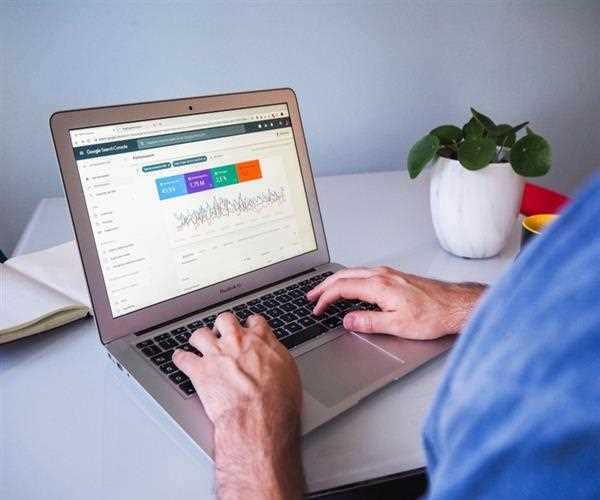An In-Depth Understanding of SEO's Core: Indexing Basics
In the dynamic realm of Search Engine Optimization (SEO), a fundamental component is the indexing of web content in databases. Indexing is the mechanism by which search engines like Google identify and catalog web pages within their extensive digital repositories. This crucial process ensures that content is not merely present in the digital space but is discoverable and retrievable by search engines, serving as a cornerstone for driving organic traffic to websites.
Exploring the Indexing Process: Discovery, Crawling, and Indexation
Google's indexing procedure encompasses three pivotal stages:
- Discovery: This initial phase is where Google encounters a URL, which can happen through various methodologies such as extracting links from other web pages, analyzing sitemaps, or observing inbound links.
- Crawling: Subsequently, Google evaluates the page. Employing advanced algorithms, Google determines the priority of URLs for crawling. The Googlebot, a specialized web crawler, then visits these prioritized pages.
- Indexing: In the final stage, Google scrutinizes the page's content for quality, uniqueness, and relevance. Factors like layout and other elements are also assessed. If a page meets Google's criteria, it is incorporated into the index.
The Complexities of Indexation
Despite the sophistication of Google's indexing system, not all web pages successfully complete the indexing process. Research indicates that a substantial number of valuable, indexable pages on prominent websites remain unindexed, often due to factors like inferior content quality, duplication, or technical impediments that bar Googlebot's access.
The Significance of Partial Indexation
An underappreciated yet vital issue is partial indexation, where segments of a page's content are not indexed. This scenario can severely impact a page's ranking potential, as unindexed segments do not contribute to search visibility. Predominantly, this occurs due to the prevalence of duplicate content, leading Google to omit non-unique content during the indexing or ranking stages.
Strategies to Enhance Indexation Probability
To optimize the likelihood of your content being indexed, implement these strategies:
- Emphasize Content Quality: Prioritize unique, valuable, and relevant content. Google favors high-caliber content over superfluous material.
- Optimize Website Functionality: A swift, efficient website is more likely to be crawled and indexed. Ensure that your server promptly responds to Googlebot's requests.
- Utilize Internal Linking Judiciously: Deploy internal links strategically to distribute PageRank across your site, indicating the importance of new pages to Googlebot.
- Effective Sitemap Utilization: While sitemaps are crucial, they do not guarantee indexing. They should be complemented with quality content and sound internal linking practices.
- Continuous Monitoring and Evaluation: Regularly monitor your website's indexing status using tools like Google Search Console for insights into the crawling and indexing of your content.
- Address Technical SEO Elements: Ensure your website is devoid of technical barriers that could hinder crawling and indexing, including optimizing robots.txt files and ensuring effective rendering of JavaScript-intensive content.
Advanced Techniques for Optimizing Content Indexability
Beyond the foundational strategies previously discussed, several advanced techniques can further enhance the indexability of your content. These methods focus on refining content and website architecture to align more closely with Google's indexing algorithms.
- Leveraging Structured Data: Implementing structured data through schema markup is a powerful way to enhance your content's clarity for search engines. It helps in explicitly defining the context and type of information presented, aiding Google in accurately indexing and presenting your content in search results.
- Mobile-First Indexing Consideration: With the increasing prominence of mobile-first indexing, ensuring your content is fully accessible and optimized for mobile devices is crucial. This includes responsive design, fast loading times on mobile platforms, and ensuring that mobile and desktop content are equivalent.
- Content Freshness and Updates: Regularly updating your content can signal to Google that your website is active and relevant. Fresh content is often seen as more valuable, and periodic updates can aid in maintaining or improving your indexed pages' search rankings.
- Avoiding Deep Nesting of Content: Content buried deep within a website’s architecture, often beyond several clicks from the homepage, can be challenging for crawlers to discover and index. Simplifying your site's structure and reducing the depth at which important content is located can improve its indexability.
- Monitoring Index Coverage Errors: Utilize Google Search Console's Index Coverage report to identify and rectify any errors that might be hindering your content's indexability. This tool provides actionable insights into issues like server errors, redirect errors, and blocked pages, allowing for targeted remediation efforts. In the realm of optimizing website performance and SEO, the selection of appropriate tools and services is paramount. Services like the comprehensive solutions offered by RhinoNetworks play a crucial role in not only enhancing a site's SEO but also in ensuring the security and efficiency of your online presence. Such tools can provide valuable insights and add an extra layer of protection, making them a wise choice for businesses looking to optimize their web infrastructure.
- Enhancing Content Visibility with Social Signals: While social media links are not a direct ranking factor, social signals can indirectly influence indexing. Active social sharing can increase content visibility, leading to more backlinks and traffic, which can signal to Google the value and relevance of your content.
Final Remarks
Mastering the intricacies of content indexing is a multifaceted endeavor requiring a blend of technical proficiency, content excellence, and strategic foresight. By implementing these advanced techniques, alongside the foundational strategies discussed earlier, you can significantly bolster your content's visibility and effectiveness in SEO. As the digital landscape continues to evolve, staying abreast of the latest indexing trends and algorithm updates will be paramount in maintaining and enhancing your website's search engine presence.




Leave Comment